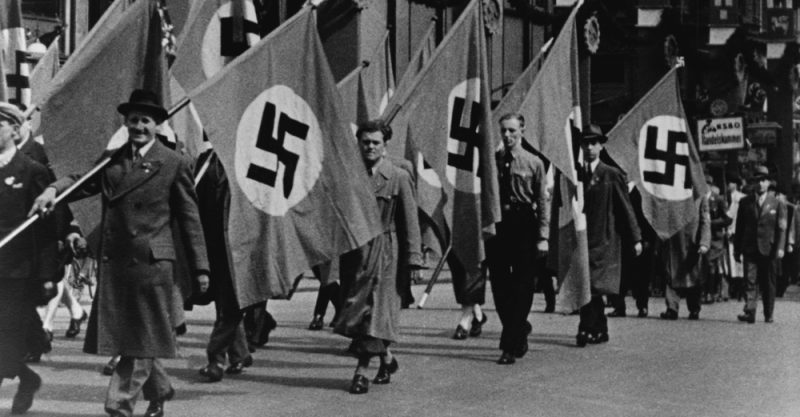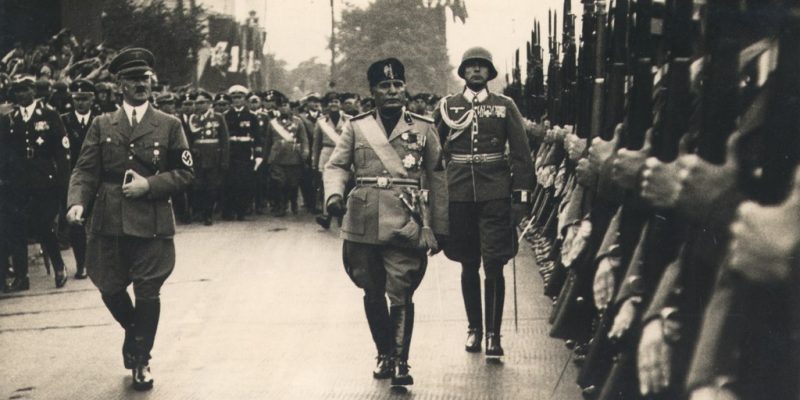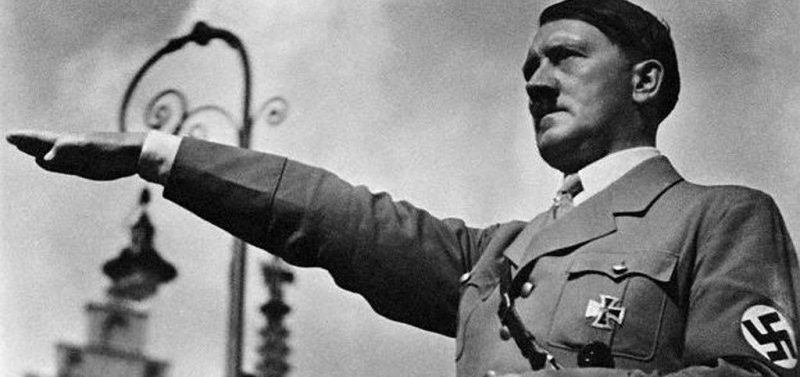We explain what a fascist is. Also, what are the main characteristics and causes of fascist movements.

What is a fascist?
“Fascist” is a term used to refer to people who have an authoritarian and undemocratic political attitude. It is a notion linked to fascism, a political movement that emerged in Europe in the 1920s and 1930s, and whose main exponents were the Fascist Party in Italy and the Nazi Party in Germany.
Another assertion of the term “fascist” is “facho” a popular abbreviation that has a pejorative connotation. This expression encompasses a set of characteristics such as intolerance, authoritarianism, racism, xenophobia, militarism and other forms of antidemocratic thinking.
Strictly speaking, fascists are those people who adhered to dictatorial regimes of Benito Mussolini (between 1883 and 1945) in Italy, of Adolf Hitler (between 1889 and 1945) in Germany or of Francisco Franco (between 1892 and 1975) in Spain.
These three leaders established totalitarian, militaristic and deeply anti-communist regimes in their countries. In them, minorities were persecuted with the aim of achieving the homogeneous unity of the nation. Furthermore, it was maintained that the State should be governed by a single political party and intervene in politics, the economy and society with the objective of achieving national progress.
- See also: Nazism
Characteristics of fascist movements

fascist movements are characterized by having an authoritarian ideology that promotes the formation of a totalitarian State in defense of a homogeneous nation organized according to militaristic parameters.
Furthermore, they identify themselves as opposition movements to other political movements: the fascists. are anti-communist, anti-liberal and anti-democratic.
In summary, fascist movements are characterized by the following features:
- Authoritarianism. They maintain that only one political group (the fascist) should exercise the highest government authority without the participation of the rest of the groups that make up society. This group is headed by a charismatic leader who has the strength and wisdom to achieve the well-being of the nation.
- Militarism. They believe that social order must be established by the government and through the military values of discipline and absolute obedience to the hierarchy.
- extreme nationalism. They maintain that the nation is a homogeneous social group defined by ethnic, historical, aesthetic and cultural features. They highlight certain characteristics of the national group, and minorities that do not meet these parameters are seen as an “other” that threatens the well-being of the national society. In some fascist movements, nationalism radicalizes and turns into racism and xenophobia.
- Anti-democracy. For fascists, the democratic system is anti-national because it prioritizes the interests of different sectors instead of the well-being of society as a whole. Consequently, it fosters social division instead of national unity.
- Antiliberalism. Being a totalitarian movement, fascists promote state intervention in the economy, politics and society. They also believe that individual freedoms that threaten the national well-being must be eliminated.
- Anticommunism. Fascists consider the Marxist notion of “class struggle” to be a threat to national unity and well-being. They maintain that communist or leftist movements are the main enemies of the nation.
Causes of fascist movements
The fascist political movement emerged in the first half of the 20th century, during the interwar period. Its main causes were the social crisis that Europe went through after the First World War, the rejection of Italian and German societies to the conditions established by the Treaty of Versailles and the deep economic crisis that began in 1929.
These elements generated a political, economic and social context that fostered the radicalization of political positions and the growth of fascist movements. In Italy, fascism was consolidated with the inauguration of Benito Mussolini in 1922; in Germany, with that of Adolf Hitler in 1933.
In summary, these are the main causes that led to the growth of fascist movements in Europe during the interwar period:
- Impoverishment in Europe. As a result of the First World War and the economic crisis of 1929, social unrest and distrust of the political system increased. Furthermore, in Germany the economic situation was even worse, due to the harsh conditions established by the Treaty of Versailles.
- Territorial aspirations. Germany and Italy were dissatisfied with the provisions of the peace treaties after the First World War. Germany lost much of its imperial territory and Italy did not receive the territories it claimed.
- The rise of charismatic leaders. Adolf Hitler and Benito Mussolini used different strategies for the growth of their respective movements and mass mobilization.
- political instability. In Germany, criticism of the republican government imposed after the First World War and the social crisis generated a context of violence and riots in the streets, in which the Nazi movement and communist groups continually clashed.
- See also: Causes and consequences of the First World War
Fascism and Nazism

The word “fascist” comes from Latin fascio (“beam”), which was a symbol of authority in the ancient Roman Empire. This symbol was taken by the Italian movement of Benito Mussolini and that is why it was called “fascism”.
However, the term “fascist” can be used in a general way to define the different groups or people who defend the ideals of fascism. For example, Nazism in Germany or the movement led in Spain by Francisco Franco, which took some features of fascism.
For its part, the term “Nazi” comes from the common use of the acronym of the Hitler party, the Nationalsozialistische Deutsche Arbeits Partei (NSDAP) or National Socialist German Workers Party. In Germany, this party was colloquially called the “Nazi Party.”
References
- Griffin, R. (2019). Fascism. Alliance.
- Hobsbawn, E.J. (1998). History of the 20th century. Criticism.
- Tato, MI, Bubello, JP, Castello, AM and Campos, E. (2011). History of the second half of the 20th century. Estrada.





